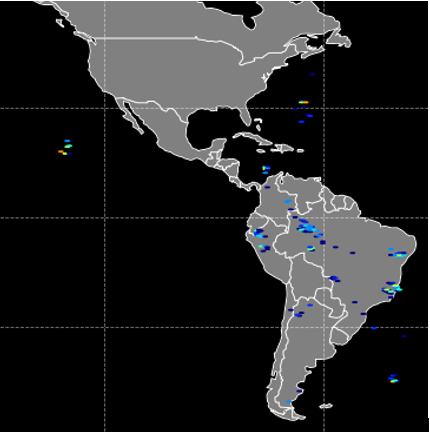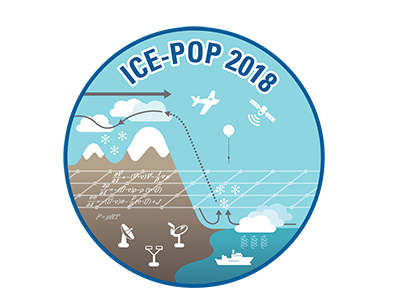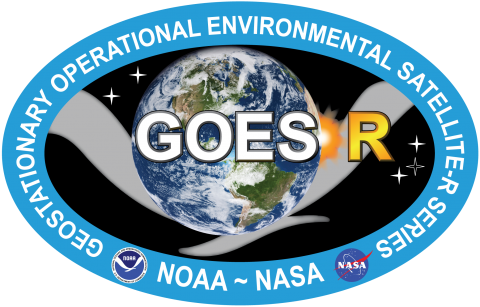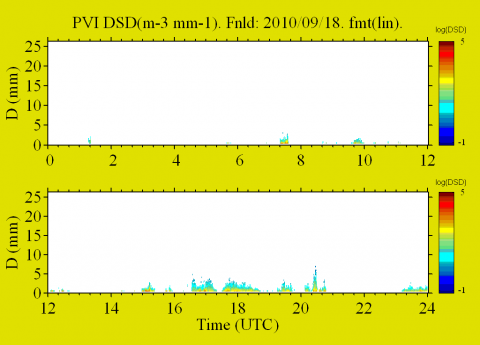 The NASA Global Hydrology Resource Center (GHRC) DAAC has published the data recipe titled ISS LIS Lightning Flash Location Quickview using Python 3.0 and GIS. This data recipe enables the visualization of lightning flash locations across user-selected ISS LIS swath data files. The Python code can plot the data directly, or create a CSV file for use with other software, such as ESRI ArcMap. The process can now be executed using Python 3.0. The new data recipe is available at: https://ghrc.nsstc.nasa.gov/home/data-recipes/iss-lis-lightning-flash-location-quickview-using-python-30-and-gis
The NASA Global Hydrology Resource Center (GHRC) DAAC has published the data recipe titled ISS LIS Lightning Flash Location Quickview using Python 3.0 and GIS. This data recipe enables the visualization of lightning flash locations across user-selected ISS LIS swath data files. The Python code can plot the data directly, or create a CSV file for use with other software, such as ESRI ArcMap. The process can now be executed using Python 3.0. The new data recipe is available at: https://ghrc.nsstc.nasa.gov/home/data-recipes/iss-lis-lightning-flash-location-quickview-using-python-30-and-gisGHRC News
 The NASA Global Hydrology Resource Center (GHRC) DAAC has published the data recipe titled ISS LIS Lightning Flash Location Quickview using Python 3.0 and GIS. This data recipe enables the visualization of lightning flash locations across user-selected ISS LIS swath data files. The Python code can plot the data directly, or create a CSV file for use with other software, such as ESRI ArcMap. The process can now be executed using Python 3.0. The new data recipe is available at: https://ghrc.nsstc.nasa.gov/home/data-recipes/iss-lis-lightning-flash-location-quickview-using-python-30-and-gis
The NASA Global Hydrology Resource Center (GHRC) DAAC has published the data recipe titled ISS LIS Lightning Flash Location Quickview using Python 3.0 and GIS. This data recipe enables the visualization of lightning flash locations across user-selected ISS LIS swath data files. The Python code can plot the data directly, or create a CSV file for use with other software, such as ESRI ArcMap. The process can now be executed using Python 3.0. The new data recipe is available at: https://ghrc.nsstc.nasa.gov/home/data-recipes/iss-lis-lightning-flash-location-quickview-using-python-30-and-gis The NASA Global Hydrology Resource Center (GHRC) DAAC published the GPM Ground Validation Micro Rain Radar (MRR) ICE POP dataset. This dataset was collected during the International Collaborative Experiments for Pyeongchang 2018 Olympic and Paralympic Winter Games (ICE-POP) field campaign in South Korea. The two major objectives of ICE-POP were to study severe winter weather events in regions of complex terrain and improve the short-term forecasting of such events. These data contributed to Global Precipitation Measurement mission Ground Validation (GPM GV) campaign efforts to improve satellite estimates of orographic winter precipitation. This dataset consists of precipitation data collected by two MRR instruments from November 1, 2017 to March 1, 2018. These data are available in netCDF-3 and ASCII text formats. It should be noted that the MRR-2 averaged (AVE) data were processed using software designed for liquid precipitation. This lead to accuracy issues with mixed and frozen precipitation, which were corrected using a new processing algorithm developed by Maahn and Kollias (2012).
The NASA Global Hydrology Resource Center (GHRC) DAAC published the GPM Ground Validation Micro Rain Radar (MRR) ICE POP dataset. This dataset was collected during the International Collaborative Experiments for Pyeongchang 2018 Olympic and Paralympic Winter Games (ICE-POP) field campaign in South Korea. The two major objectives of ICE-POP were to study severe winter weather events in regions of complex terrain and improve the short-term forecasting of such events. These data contributed to Global Precipitation Measurement mission Ground Validation (GPM GV) campaign efforts to improve satellite estimates of orographic winter precipitation. This dataset consists of precipitation data collected by two MRR instruments from November 1, 2017 to March 1, 2018. These data are available in netCDF-3 and ASCII text formats. It should be noted that the MRR-2 averaged (AVE) data were processed using software designed for liquid precipitation. This lead to accuracy issues with mixed and frozen precipitation, which were corrected using a new processing algorithm developed by Maahn and Kollias (2012).


 The NASA Global Hydrology Resource Center (GHRC) DAAC published the GPM Ground Validation Precipitation Video Imager (PVI) LPVEx. This dataset consists of precipitation particle images and drop size distribution (DSD) data collected by the Precipitation Video Imager (PVI) during the Global Precipitation Measurement (GPM) mission Light Precipitation Validation Experiment (LPVEx) field campaign. This field campaign took place around the Gulf of Finland in September and October of 2010. The goal of the campaign was to provide additional high-latitude, light rainfall measurements for the improvement of GPM satellite precipitation algorithms. The PVI instrument was designed by Dr. Larry Bliven at NASA Wallops Flight Facility. Data files are available from September 17, 2010 through May 11, 2011 in Excel format and contain the average, minimum, and logarithmic DSD bin sizes and number of particles per unit time. Browse images are available in BMP and JPG formats. It should be noted that while the LPVEx campaign officially took place in September and October 2010 in the Gulf of Finland, PVI instruments were operational after the campaign with data extending to May 11, 2011.
The NASA Global Hydrology Resource Center (GHRC) DAAC published the GPM Ground Validation Precipitation Video Imager (PVI) LPVEx. This dataset consists of precipitation particle images and drop size distribution (DSD) data collected by the Precipitation Video Imager (PVI) during the Global Precipitation Measurement (GPM) mission Light Precipitation Validation Experiment (LPVEx) field campaign. This field campaign took place around the Gulf of Finland in September and October of 2010. The goal of the campaign was to provide additional high-latitude, light rainfall measurements for the improvement of GPM satellite precipitation algorithms. The PVI instrument was designed by Dr. Larry Bliven at NASA Wallops Flight Facility. Data files are available from September 17, 2010 through May 11, 2011 in Excel format and contain the average, minimum, and logarithmic DSD bin sizes and number of particles per unit time. Browse images are available in BMP and JPG formats. It should be noted that while the LPVEx campaign officially took place in September and October 2010 in the Gulf of Finland, PVI instruments were operational after the campaign with data extending to May 11, 2011. Dr. Pierre Kirstetter, GHRC DAAC User Working Group chair, is spotlighted on the NASA EarthData website, "Who Uses NASA Earth Science Data?" Pierre uses NASA Earth Science data for improving our understanding of precipitation and flooding. Dr. Pierre Kirstetter, Associate Professor, the School of Meteorology and the School of Civil Engineering and Environmental Science, University of Oklahoma; Faculty Member, Advanced Radar Research Center, University of Oklahoma; Affiliate, National Severe Storms Laboratory, Norman, OK.
Dr. Pierre Kirstetter, GHRC DAAC User Working Group chair, is spotlighted on the NASA EarthData website, "Who Uses NASA Earth Science Data?" Pierre uses NASA Earth Science data for improving our understanding of precipitation and flooding. Dr. Pierre Kirstetter, Associate Professor, the School of Meteorology and the School of Civil Engineering and Environmental Science, University of Oklahoma; Faculty Member, Advanced Radar Research Center, University of Oklahoma; Affiliate, National Severe Storms Laboratory, Norman, OK.
Read more: User Profile: Dr. Pierre Kirstetter






